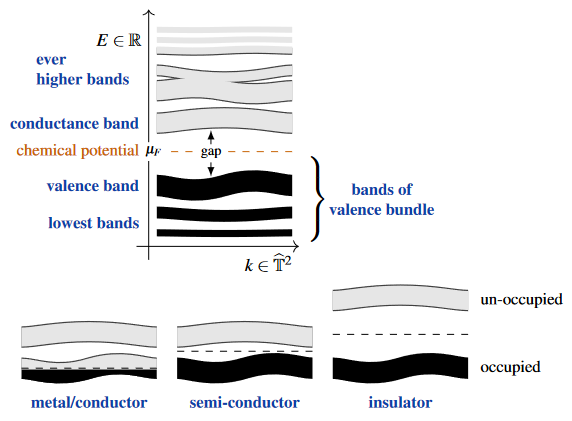nLab insulator
Context
Solid state physics
-
basics
-
Examples
Contents
Idea
In solid state physics an insulator is a crystalline material for which the chemical potential of the electrons is inside a sizeable energy gap between the valence band and the conduction band. (If there is a gap but just a small one, one speaks of a semi-conductor, instead.)
This situation implies that for net electric charge to be transported through the material (hence for it to become a conductor) an energy density above the gap width has to be applied from the outside, in order to lift electron states from the valence bundle to the conduction bundle, where they can then propagate. Below this energy density the material hence resists the transport of electric current.
 (graphics from SS 22)
(graphics from SS 22)
Due to the energy gap, the valence bundle of an insulator is well-defined. If this has a non-trivial class in (twisted equivariant) topological K-theory of the Brillouin torus, one speaks of a topological insulator (see at K-theory classification of topological phases of matter).
Related concepts
Literature
See also:
- Wikipedia: Insulator (electricity)
Last revised on January 12, 2025 at 12:48:05. See the history of this page for a list of all contributions to it.